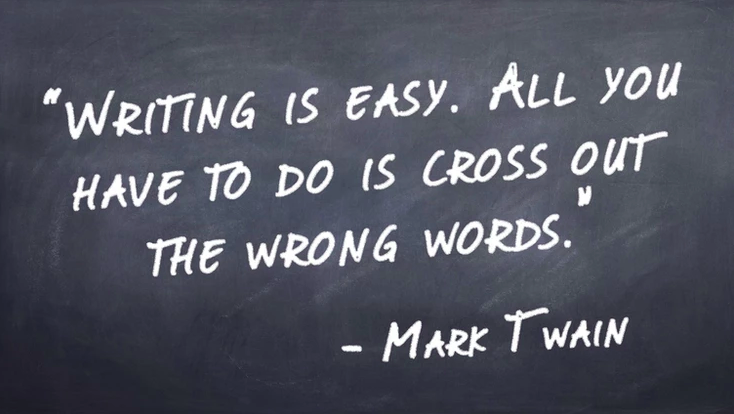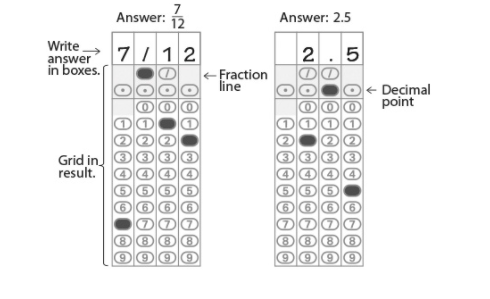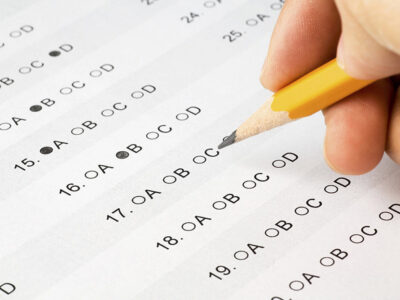The easiest way to eat an elephant is one bite at a time. In this post, we’re going to take a deep dive into SAT sections. By the end of this article, you’ll know how many sections are on the SAT, what those sections are, and how to best prepare for each one.
Spoiler alert: knowing what sections are on the SAT is helpful. What’s even more helpful is knowing what types of questions are in each section, and how you can best prepare for the questions that are the most difficult for you. Keep reading to learn more.
How Many Sections are on the SAT?
The SAT has four sections. They cover three subjects: reading, writing, and math. The essay section (which was once an optional addition) was permanently eliminated in 2021. One less thing to worry about!
Kickstart Your SAT Prep with Test Geek’s Free SAT Study Guide.
The math portion of the test is divided into two sections. The first math section must be done without a calculator, but you are allowed to use a calculator on the second half of the test. However, this does have to be an approved calculator – click here to make sure yours is on the list.

Unfortunately, this isn’t an approved calculator. We checked.
Here’s how the whole test breaks down:
| SAT Section | Time Allowed (minutes) | Number of Questions |
| Reading | 65 | 52 |
| 10 minute break | ||
| Writing | 35 | 44 |
| Math (No Calculator) | 25 | 20* |
| 10 minute break | ||
| Math (Calculator Optional) | 55 | 38* |
| Total | 180** | 154 |
| *While the vast majority of SAT questions are multiple choice, the math sections contain 13″grid-in” questions. More on those later!
**This time does not include both 10-minute breaks. This is just the time you’ll spend taking the test. |
||
What sections are on the SAT?
While the SAT is offered as one complete test, you could also think about each section as its own individual test, with its own score and time limit. Each section is given on its own, and you aren’t allowed to go back to an earlier section or work ahead if you finish a section early. Read below to learn about each individual section.
SAT Section One: Reading
About this Section
You’ll have 65 minutes to finish the reading test. This section has 52 multiple choice questions. You’ll answer between 10 and 12 questions about each passage.
Test Structure
There are five reading passages. Four of them are single passages, and the fifth is a pair of passages that you’ll read together. Out of these five passages, here’s what you can expect:
- One passage will be from a work of fiction (probably not something you’ve heard of before. Sorry, Harry Potter and Twilight fans!)
- One or two passages from a US founding document (such as the Constitution) or a text in the Great Global Conversation (ex: a speech from Nelson Mandela)
- One passage related to economics, psychology, sociology, or some other social science
- Two passages connected to science (physics, chemistry, biology, or Earth science)
The Point
The reading test evaluates your ability to comprehend and analyze different elements of each passage.
The reading section can be the most challenging portion of the SAT for many test-takers – but it doesn’t have to be. An important thing to remember here is to avoid over-complicating things. You don’t to have any special knowledge or familiarity with the subject. All of the information you need to answer the questions is in the passage.
The questions cover three broad topics: how the author uses evidence, understanding words in context, and analysis in history/social studies and science. If you wanted to get even more specific, you could further break down the questions into the following eight categories:
- Big Picture Questions
- There are questions about broad details in the passage.
- Example Questions
- “The primary purpose of this passage is to…”
- “This paragraph primarily serves to…”
- Frequency Tested: High
- Detail Questions
- These are similar to main idea questions, but they focus on a smaller division of text.
- Example Questions
- “The narrator indicates that Bob left his job because….”
- “The second paragraph (lines 28-34) indicates the speaker’s belief that…”
- Frequency Tested: High
- Supporting Evidence Questions
- These questions ask you where you found the answer to the previous question.
- Example Question: “Which choice provides the best evidence for the answer to the previous question?”
- Frequency Tested: High
- Vocabulary in Context Questions
- These questions ask you to define words based on context clues from the passage (no outside knowledge required, although a review of SAT vocabulary won’t hurt).
- Example Questions
- “As used in line 3 and 72, this word most nearly means…”
- “The author uses this word throughout the passage mainly to….”
- Frequency Tested: High
- Inference Questions
- These questions ask you to use reason to arrive at a conclusion. Words such as “imply” and “infer” are often used.
- Example Questions
- “In Passage 2, John implies that the goal of the experiment was to determine the…”
- “It can reasonably be inferred from the passage that most people regarded Miss Peterson’s comment about the business downsizing as…”
- Frequency: Medium
- Connection Questions
- These questions assess your ability to connect pieces of information in the passage. They often show up as cause and effect questions, or compare and contrast questions.
- Example Questions:
- “With which of the following statements would the narrator most likely agree?
- “Based on the passage, to which of the following hypothetical situations would Atticus most strongly object?”
- Frequency: Medium
- Function Questions
- These questions ask you to analyze what the text is doing, or what the author intention was in writing.
- Example Questions
- “In the second paragraph (lines 14-19), the discussion of seasonal buying habits primarily functions to…”
- “The question in lines 41-44 primarily functions to…”
- Frequency: Medium
- Data Comprehension Questions
- Some passages will include graphs or data tables, and you may be asked to point out specific details or numbers.
- Example Questions
- “According to the table, how many million people live in California?”
- “According to the graph, what was the percentage increase between 2015 and 2016?”
- Frequency: Low
SAT Section Two: Writing

About this Section
You’ll have 35 minutes to complete the writing section. You have less time per question in this section than you do in the reading section. While this may make you nervous, keep in mind that the passages you’ll be reading are significantly shorter. A passage in the reading section may range from 600-800 words, but typically the passages in the writing section are closer to 400-450 words.
Feeling Overwhelmed? Get 1-on-1 SAT Help from a Test Geek Tutor
Test Structure
There are 44 multiple choice questions about four reading passages. You’ll answer 11 questions about each passage.
The passages range in complexity and format, and they come from a variety of topics. At least one passage will be written in narrative style. It won’t be fiction, but it could be an account of a historical event, or a description of events from a scientific experiment.
Other passages could be argumentative or persuasive in nature, or they could be more informational and explanatory. Some passages may contain charts or graphics that you’ll be asked to interpret along with the written passage.
The Point
The title of this section is slightly misleading, because you aren’t actually writing anything. This section has to do more with evaluating how well you catch grammatical errors, and if you can make text more clear and concise. In other words, it’s about critiquing someone else’s work, rather than creating something that will be be critiqued by someone else. This is good news, right??
This section features two main types of questions:
- Grammar Questions
- Also known by their proper name, “Standard English Conventions.” These questions test your eye for errors in subject/verb agreement, sentence construction, and punctuation, to name a few examples.
- Example Questions
- “In the years that followed. Many talented writers and illustrators…”
- NO CHANGE
- followed; many
- followed, many
- followed – many
- “The novelty of this comfortable work-from-home life, however, soon got worn off quickly.
- NO CHANGE
- was promptly worn
- promptly wore
- wore
- “In the years that followed. Many talented writers and illustrators…”
- Frequency: About 75% of the test
- “Be an Author” Questions
- These questions assess how well you can identify effective writing. They may focus on combining sentences, transitioning from one idea to the next, or choosing the most clear and concise option.
- Example Questions
- “The writer is considering deleting the underlined sentence. Should the writer do this?”
- Yes, because it does not provide a transition from the previous paragraph.
- Yes, because it fails to support the main argument of the passage as introduced in the first paragraph.
- No, because it continues the explanation of how acid whey can be disposed of safely.
- No, because it sets up the argument in the paragraph for the benefits of Greek yogurt.
- The writer wants a conclusion that restates the main themes of the passage. Which choice best accomplishes the goal?
- NO CHANGE
- “Impressive worldwide sales that continue to remain high to this day.”
- “Enduring ability to delight children and engage them in learning how to read.”
- “Important role in the history of illustration in the twentieth century.”
- “The writer is considering deleting the underlined sentence. Should the writer do this?”
- Frequency: About 25% of the test
SAT Sections Three and Four: Math

About this Section
Section Three (No Calculator): You’ll have 25 minutes to answer 15 multiple choice questions and five grid-in questions. Keep in mind that you won’t be allowed to go back to this section once the calculator-optional portion of the math test begins.
Section Four (Calculator Optional): You’ll have 55 minutes to answer 30 multiple choice questions and eight grid-in questions.
Test Structure
Many questions are standalone questions. Some questions will be in groups and will focus on a set of graphs, charts, or tables (Example: “Questions 9-11 refer to the following information”)
Most questions are multiple choice, but there are also a few “grid-in” questions. On these questions, you’ll be asked to give a numeric answer. For more information, visit this link.

Resources Provided
The SAT provides a list of everyday formulas, as well as scratch paper inside the test booklet. You’ll want to bring your own #2 pencils and erasers (two should be enough), as well as an approved calculator (Follow this link to view the SAT Calculator Policy.).
For more details on what reference information is provided, visit this link.
The Point
Both sections of the math test focus on the areas of math that play the biggest role in college and career success. The SAT also uses this section to assess your reasoning skills.
Questions on the math section can be broken down into four categories. We won’t show example questions here, because they are specific and nuanced. However, if you would like to see some example math questions, check out this link!
- Heart of Algebra Questions
- This section focuses on the mastery of linear equations and systems. Most people consider this the easiest portion of the math SAT, but you may not have covered the material since middle school. A review here might be helpful as you prepare for the test.
- Frequency: 19 questions (a little more than 30% of the test)
- Problem-Solving and Data Analysis Questions
- These questions are assessing your level of quantitative literacy. You’ll be tested on how well you can interpret charts, tables, ratios, and statistics. This may be what you’ve spent the least amount of time studying in math class, so pay special attention here when you’re studying for the test.
- Frequency: 17 questions (a little less than 30% of the test)
- Passport to Advanced Math
- This section can be the hardest for many students. These questions can include algebra without exponents, as well as non-linear graphs and functions. These questions often require the manipulation of complex equations.
- Frequency: 16 questions (a little less than 30% of the test)
- Additional Topics in Math
- Here, you’re most likely to see geometry, trigonometry, and complex numbers most relevant to college and career readiness.
- Frequency: 6 questions (about 10% of the test)
How will my SAT test be scored?
Your raw scores will be converted into two scores, each between 200 and 800. You’ll have one score for the English sections (reading and writing), and one combined score for both math sections. These scores will be added together, with a maximum possible score of 1,600. The scores are calculated in ten-point increments.
No question is worth more than another – each question is worth one point on your raw score. Also, there is no additional penalty for guessing, so if you’re unsure what the correct answer is, you’re better off marking down any answer rather than leaving the question blank.

What can I do to prepare for each SAT section?
Now that you know what’s on the test, what should you do next?
If you don’t remember anything else here, remember this. Figure out what type of question in each section is the most challenging for you, and spend the most time studying those types of questions. This will set you apart from someone who isn’t intentionally planning how they will study for the SAT.
A great first step is to take a practice test or two and figure out where you have room for the most growth. In the reading section, if you’re really good at the main idea questions but had a harder time with the purpose questions, make a point to spend more time studying purpose questions. In math, if you always crush the heart of algebra questions, but get stuck on the passport to advanced math questions, spend some time thinking about how you can get better there.
This will give you a huge edge on test day. It represents the greatest opportunity for you to boost your score. Plus, you’ll not only be more prepared, but you’ll feel more confident; you’ll be in prime position to get your best score yet.











Comments